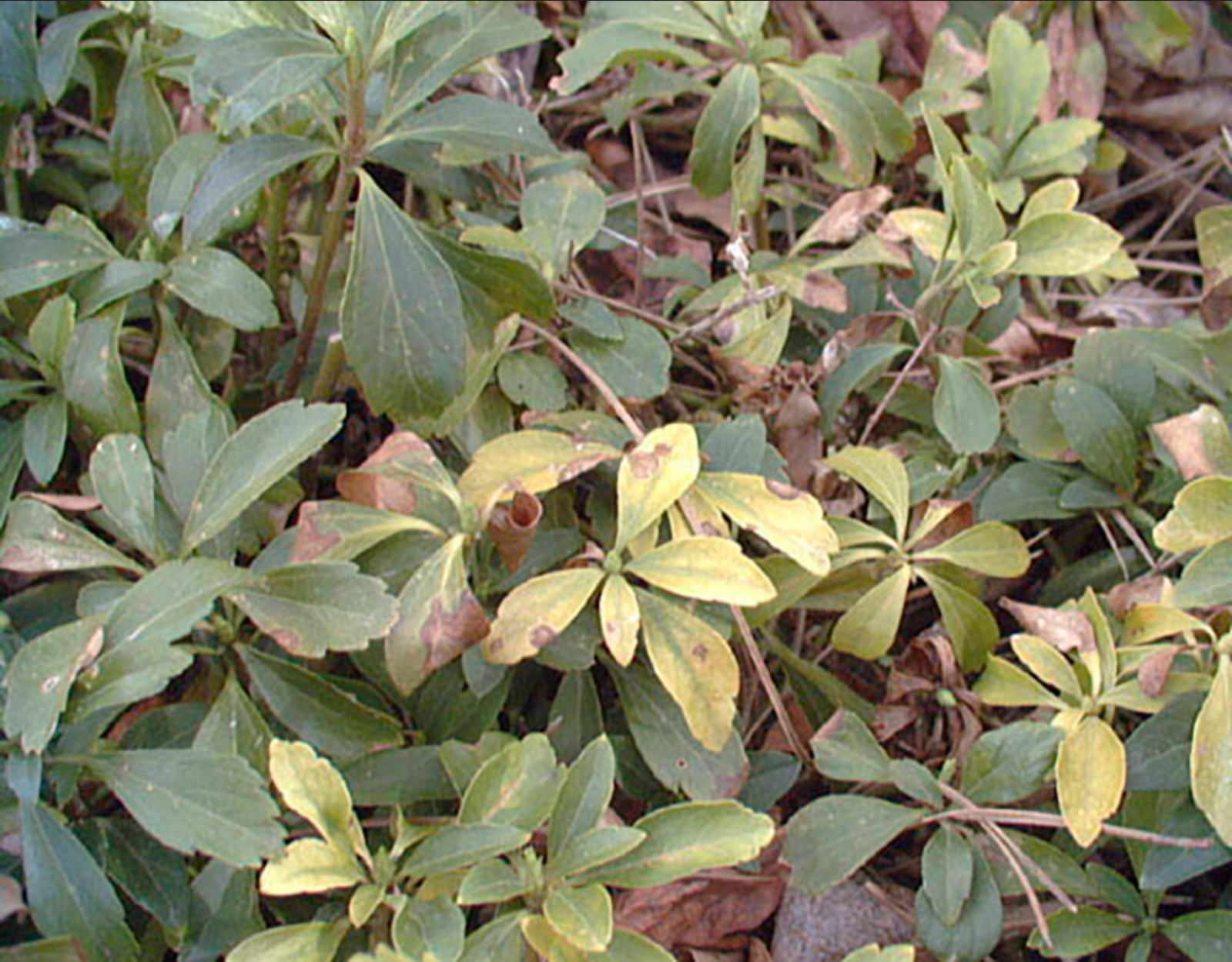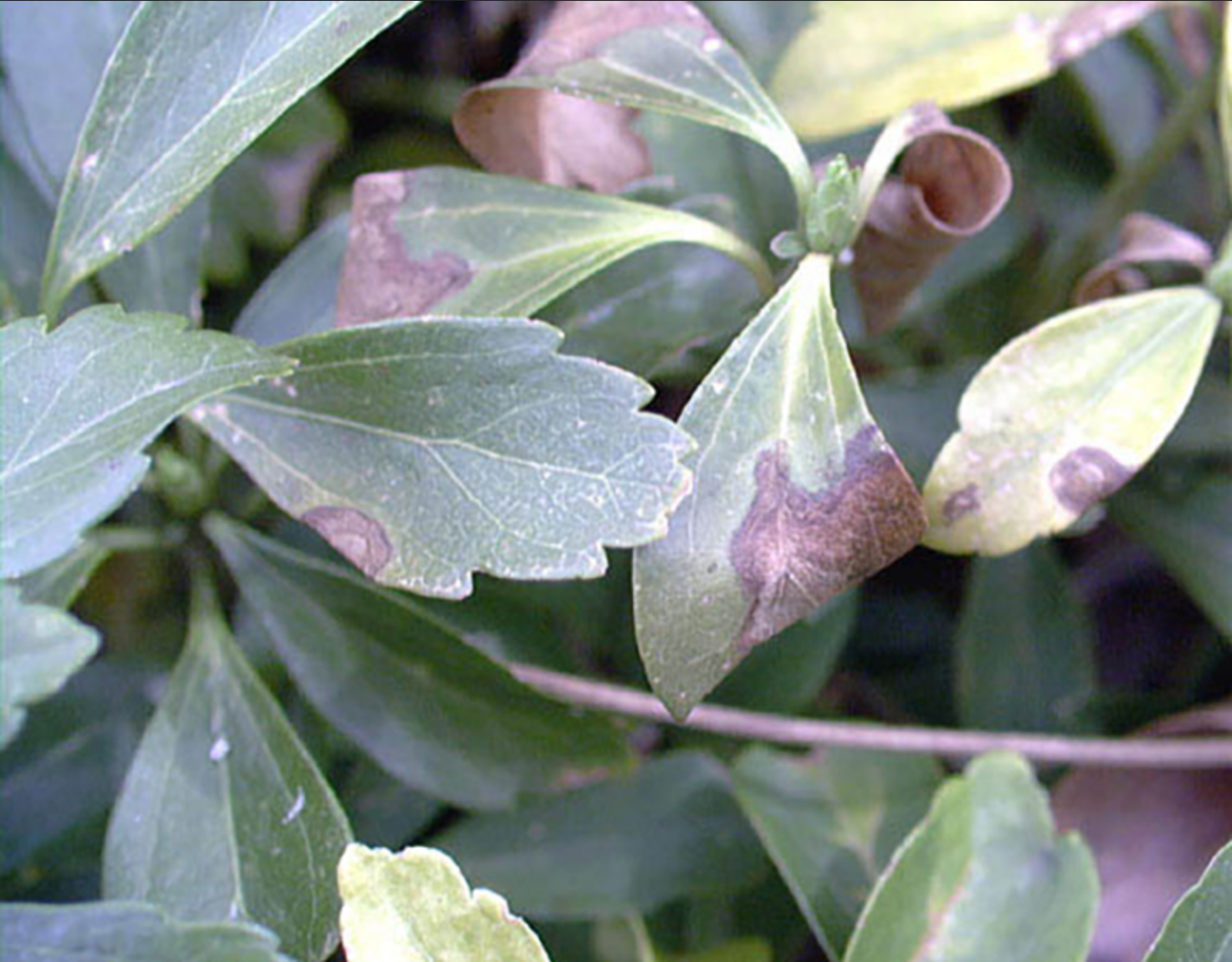Picture of the Week
June 14, 2021
Volutella Leaf Blight on Pachysandra
Gail Ruhl, Senior Plant Diagnostician-retired, PPDL
The most devastating disease of Pachysandra is leaf blight and stem canker, caused by the fungus Volutella pachysandricola. This disease can destroy large areas in a bed. Infected leaves first develop tan or brown blotches with dark brown margins, which expand, often with concentric lighter and darker zones. Stem and stolon cankers can become numerous and plants start to wilt and die. Cankers appear as water-soaked diseased areas, turn brown, shrivel and often girdle the stem. Infections often begin in damaged or senescent plant parts and spread into healthy plant parts. V. pachysandricola is a wound parasite, capable of girdling stems within 2 weeks of infection. Under warm, humid conditions in late spring and summer, the fungus produces pink-salmon fruiting structures containing masses of fungal spores on the surfaces of cankers and undersurfaces of infected leaves.
Click image to enlarge
Volutella blight of pachysandra is often associated with plant stresses such as recent transplanting, exposure to bright sunlight, shearing, scale insects, and previous winter damage. Normally this disease does little damage to vigorous plants, thus providing optimal growing conditions is the most important control measure. Some pachysandra beds have been aided by thinning of the plants to reduce dampness and humidity. Severely diseased plants should be dug out and destroyed. Fungicides, when used according to the label, and in conjunction with sanitation (removal of infected plants), may help control the spread of this fungal disease to healthy plants.



